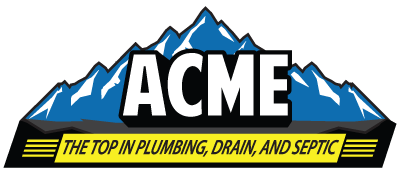Behind the Scenes: Unveiling the Telltale Signs of a Sneaky Water Leak
Water leaks are among the most common but often overlooked issues in households. While some leaks are obvious, like a dripping faucet or a puddle under the sink, others can be more insidious, lurking behind walls, under floors, or in your yard. Ignoring these sneaky water leaks can lead to significant damage, increased water bills, and costly repairs. Understanding the telltale signs of a hidden water leak is crucial for maintaining the health and integrity of your home.
1. Unexplained Increase in Water Bills
One of the first signs of a hidden water leak is a sudden and unexplained spike in your water bills. If your water usage hasn't changed but your bill has skyrocketed, it's time to investigate. This increase suggests that water is being wasted somewhere in your system, and the culprit could be a hidden leak.
2. Damp or Wet Spots
Damp or wet spots on walls, ceilings, or floors are clear indicators of a hidden water leak. These spots may appear discolored or swollen, and they often feel damp to the touch. In some cases, you might notice peeling paint or wallpaper. These signs usually point to a leak within your plumbing system or roof.
3. Mold and Mildew Growth
Mold and mildew thrive in moist environments, so their presence is a red flag for hidden water leaks. If you notice mold or mildew growing in areas that are typically dry, like corners of rooms, walls, or under carpets, it’s essential to address the issue promptly. Mold not only damages your home but also poses health risks to you and your family.
4. Musty Odors
A persistent musty smell in your home can be a sign of a hidden water leak. This odor is often caused by mold and mildew growth in areas with excess moisture. If you can’t find the source of the smell, it might be coming from a leak behind the walls or under the floors.
5. Sound of Running Water
If you hear the sound of running water when all faucets and appliances are turned off, you might have a hidden leak. This sound is often faint and can be heard through walls or floors. Listening carefully can help you pinpoint the general area of the leak.
6. Cracks in Foundation or Walls
Water leaks can cause the soil around your home's foundation to shift, leading to cracks in the foundation or walls. If you notice new or growing cracks, it’s essential to investigate further. While not all cracks are due to water leaks, they can indicate significant underlying issues that need immediate attention.
7. Low Water Pressure
A sudden drop in water pressure can be a sign of a leak in your plumbing system. If water isn’t flowing as forcefully as it used to, there could be a leak diverting water away from your faucets and fixtures. This issue often requires professional inspection to locate and repair the leak.
8. Unusual Water Meter Activity
Your water meter can be a helpful tool in detecting hidden leaks. Turn off all water-using appliances and check your water meter. If the meter continues to move, even slightly, it indicates that water is still flowing somewhere in your system. This is a clear sign of a hidden leak that needs to be addressed.
Addressing Hidden Water Leaks
If you suspect a hidden water leak, it's crucial to act quickly to prevent further damage. Here are some steps to take:
Inspect Common Leak Areas: Check under sinks, around toilets, and behind appliances for signs of leaks.
Use Leak Detection Tools: Consider using a moisture meter or thermal imaging camera to detect hidden leaks.
Call a Professional: If you can’t locate the leak yourself, it’s best to call a professional plumbing service like ACME Plumbing who can use specialized tools to find and fix the issue.
By staying vigilant and recognizing the signs of hidden water leaks, you can protect your home from damage and avoid costly repairs. Regular maintenance and prompt attention to potential issues are key to ensuring the longevity and safety of your home’s plumbing system.
